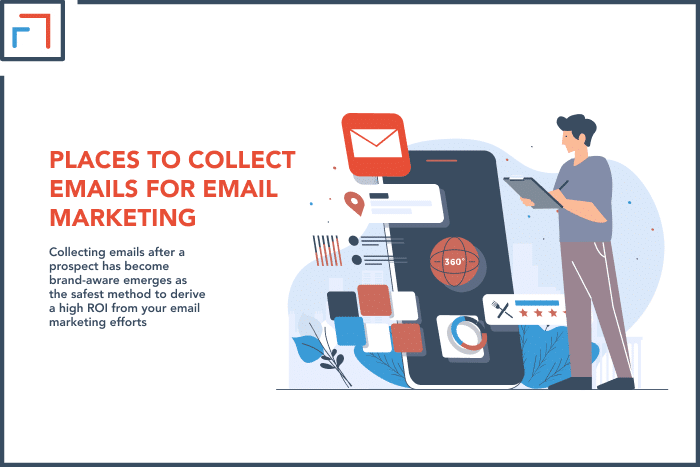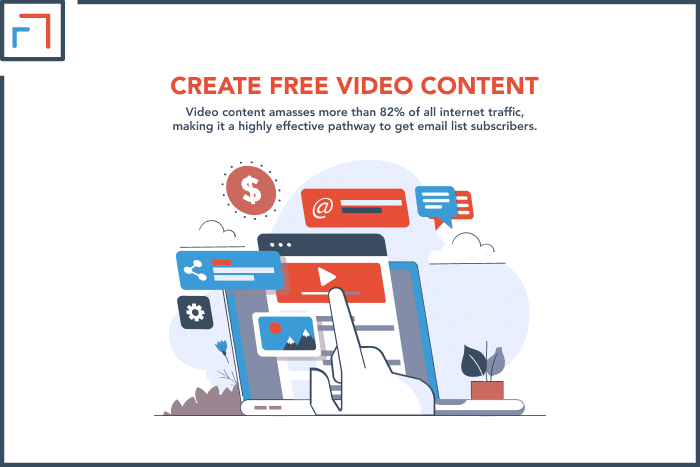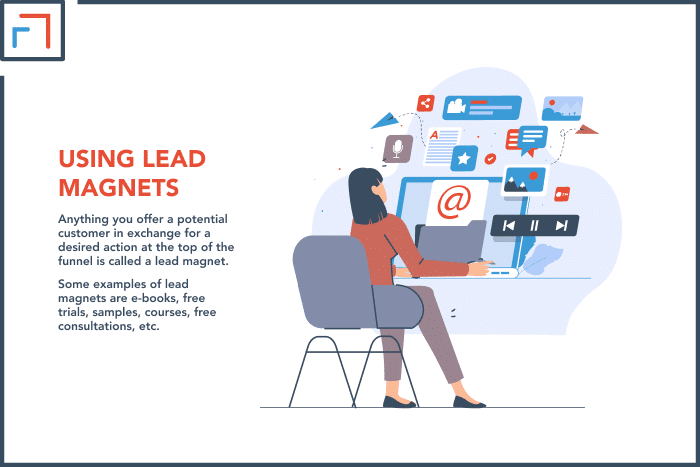Emails have evolved from simple content sharing to delivering highly personalized and targeted information. Today’s consumers are selective about what lands in their inboxes and which emails they open. The first step to succeed in modern email marketing is collecting email addresses.
To collect emails, start with a compelling, relevant offer, such as targeted giveaways. Engage with brand-aware audiences through personalized outreach, valuable gated content and lead magnets. Prioritize building trust to stimulate voluntary email submissions and enhance engagement rates.
This article will explore these strategies in detail, offering a roadmap for effective email collection in today’s market.
Places to Collect Emails for Email Marketing
Sending an email to a potential customer’s inbox is simple, given the dozens of services offering email lists to budding entrepreneurs.
However, the goal of an email campaign extends beyond just delivering the message to the inbox.
Emails sent to an unaware audience are frequently marked as spam, showcasing the limitations of email marketing as a top-of-the-funnel (ToFu) strategy.
I have written a whole article on email marketing challenges to help you identify every problem area and craft a solution for it.
ToFu, or Top-of-the-Funnel, is the initial stage where potential customers become aware of your business or products.
MoFu, or Middle-of-the-Funnel, is the stage where they consider your product among their options.
Interestingly, 68% of people only open emails from brands they recognize, indicating the effectiveness of email marketing as a middle-of-the-funnel (MoFu) tool.
When you approach people who have already entered your sales funnel by opting into your email list, they are more likely to proceed further down the funnel and convert from prospects to customers.
Now the only problem is, how do you get people to be a part of your sales funnel? Luckily, I have an article on getting people to be a part of your sales funnel.
Thus, collecting emails after a prospect has become brand-aware emerges as the safest method to derive a high ROI from your email marketing efforts.
The key challenge here is encouraging these potential leads to transit from the ToFu stage to the MoFu stage by voluntarily giving their email addresses.
With this in mind, let’s delve into some strategies that you can use to collect email addresses from potential customers:

1. Purchase Confirmations
As a business owner, your best bet is collecting emails from customer purchases.
Encourage first-time customers to share their email addresses with you in exchange for coupons. If you’re not offering a coupon the first time, collect their email address by attracting them with coupons.
Promise that they’ll receive exclusive discount offers in their inbox. When sending these emails, personalize them with their name to improve open rate and repeat purchases.
Personalized emails have an 82% higher open rate than generic emails.
2. Host Giveaways
People love free value, and they love contests and giveaways even more. Giveaways are highly rewarding for businesses as they yield a conversion rate of almost 34%.
But when your goal is collecting emails rather than selling the product, the giveaway will likely yield a much higher response rate.
However, an important factor that might impact the potential buyer’s willingness to subscribe to your email list is relevancy.
You cannot expect the right audience to subscribe to your email list without offering valuable giveaways.
| Example Explanation Consider this: You have a pet grooming business. Your potential audience includes pet owners. What will happen if you offer makeup as a giveaway to 5 lucky winners in exchange for their email addresses? A few people might subscribe, but even if they do, they will associate makeup with your brand. And worse – they might or might not have pets. So, you will be wasting a lot of your email marketing budget on people who don’t have pets! Compare this with the scenario where you offer high-quality pet collars as a giveaway to the potential audience. Pet lovers will be all in! The result? You will get email addresses of people who are pet lovers and will most likely be interested in availing your services. |
3. Free Video Content
Video content amasses more than 82% of all internet traffic, making it a highly effective pathway to get email list subscribers.
When you have established a touchpoint with a potential customer by offering them valuable information through video content, they have already entered the top of your sales funnel.
Marketers achieve a 54% increase in brand awareness through video content (Source)
Building on this initial engagement, you can encourage them to subscribe through a Call to Action (CTA) in the video or through an opt-in form on a website landing page.
When you use this method to build an email list, emails stand in the middle of the funnel where the audience is already brand-aware. The email content further nurtures and builds the audience’s interest.
It’s important to recall a key stat we shared earlier:
68% of people only open emails from brands they recognize.
Given this fact, email lists gathered from video content will likely generate a higher ROI than emails gathered through other means, as these individuals are likely familiar with your brand.
You can achieve a high opt-in rate by prompting potential audiences to sign up through video content.
Looking ahead, the next section will introduce a surefire way to get people to subscribe to an email list after you have built credibility through methods like video content.

4. Host Events with Registration Requirement
Hosting virtual events with exclusive content is a great idea to build up your email list. But before you approach people to sign up for your event, consider building credibility through free-value content.
Brands like the New York Times and HootSuite have spent millions to build trust with their content and services. They have thousands of pages with free value for the audience.
Additionally, ranking on search engines has helped them build credibility. After attaining this credibility, they are in a position to create gated events.
This is where you ask for customers’ emails or subscriptions to get access to the valuable content. In this case, the audience is already aware of the value of the content.
Plus, if they only ask for a subscription to an email list in exchange for participation in a valuable event, the conversion is simple and quick.
But you don’t have to spend millions on building credibility if you’re a small business. Consider this example that uses two steps to build credibility, followed by gated content or events.
But before that, do check out my article on email marketing tips for small businesses. Now, on to the example!
| Example Explanation Imagine that you’re a business that offers mental health help. To build credibility with the audience, your platform’s mental health professionals provide value through webinars broadcast to a live audience over YouTube and Facebook. You get over 2000 viewers on your first webinar, followed by a slight increase in the second. Your audience is brand-aware and is willing to attend more of these webinars. You host your third webinar on a private platform like Google Meet or Zoom. You only send the meeting link to people who register for the webinar beforehand via email addresses. By offering free value through two ungated webinars, you build credibility. You then add a gate to your upcoming content. Since the audience is already brand aware, they are highly likely to give their email addresses to get access to the content and also highly likely to open your emails when you add them to your email list. |
5. Lead Magnets
Anything you offer a potential customer in exchange for a desired action at the top of the funnel is called a lead magnet.
Some examples of lead magnets are e-books, free trials, samples, courses, free consultations, etc.
You can offer these lead magnets to your small audience through free video content and to audiences who visit your website by using a signup form.
You can find a complete list of such top of the funnel marketing activities in my article called: TOFU marketing activities.
For example, consider a health and wellness website. This site could offer a free e-book titled “10 Steps to Mindful Living” to visitors who sign up for their newsletter.

Final Words
Email marketing has remained a crucial tool for driving sales since its inception. Since then, audiences have emerged to identify which content is valuable to them and which is not.
Today, the first step to getting email addresses by establishing credibility and trustworthiness is what determines the success of the email marketing campaigns that follow.
You can harness the power of email marketing by approaching the audience after you’ve built brand awareness and leveraging this channel for all the benefits it offers.
